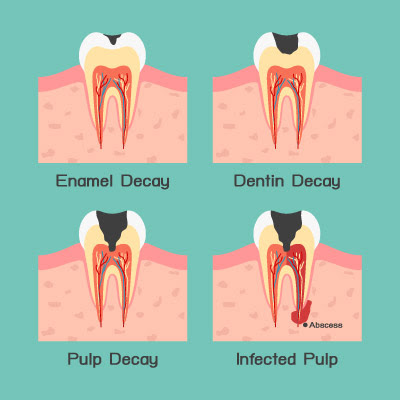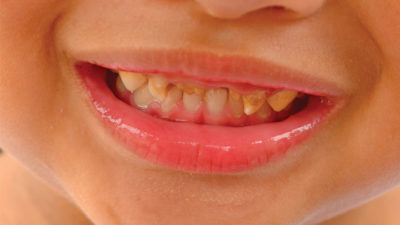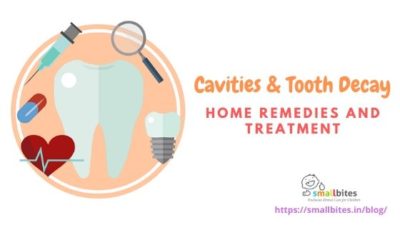All of us are well aware of what teeth decay actually looks like, how it manifests itself, the physical changes and the causes for it. Not many know the process of decay, and how early intervention can stop and even reverse the deterioration of teeth.
Everyone is susceptible to tooth decay. While adults can prevent it or look after their teeth better, children cannot do the same. It is left up to us parents to ensure we know the stages of caries and how we can intervene at the right time, with the right methods and prevent further damage from taking place.
What causes dental cavities in Children (a.k.a Tooth decay, cavities)?
Whenever you have food or drink containing sugar, it reacts with the bacteria in your mouth to produce acid. Dental plaque, a sticky layer which builds up on your teeth, contains bacteria. The acid attack lasts for at least 20 minutes, but often much longer if food becomes stuck on the teeth or snacking is continuous or frequent. In time, the acid will dissolve the outer enamel surface of the tooth.
In the early stages of decay, the enamel can repair itself by taking in minerals from saliva. Fluoride can also help to strengthen tooth enamel. However, if food and drink containing sugar or acid are consumed frequently between meals, more destruction than repair of enamel occurs. A cavity is formed when the enamel layer crumbles, bacteria enter and the decay process spreads rapidly. After this point, the cavity will not ‘go away’ without treatment.
What is the process of Dental Caries in Children ?

- The mouth is a cavity that is exposed to germs all day, everyday. Bacteria grow in the gut and help in the process of digestion, with the process beginning in the oral cavity. Bacteria also enter the oral cavity with food. The breakdown of food causes the formation of plaques, sticky whitish deposits that collect around the gum line, grooved surfaces of teeth and edges of fillings. Plaque allowed to collect for a prolonged period of time, hardens into ‘tartar’.
- Plaque also uses the remnants of food in the mouth to produce ‘acids’. Some foods like beverages and meat are already acidic and affect the teeth.
- Acid attacks the outer layer of teeth, the enamel and dentine, and erodes them gradually over a period of time. Gradually a small hole or cavity begins to appear on the surface of the tooth or the enamel. This stage is usually painful.
- Once holes are formed in the enamel or outer lining of the teeth, it becomes easier for plaque and bacteria to reach the dentine (layer just below the enamel). Dentine is usually softer and gets eroded faster.
- If treatment doesn’t begin at this stage, the bacteria reach the tooth pulp, where nerves are exposed to them, resulting in a excessive pain.
When bacteria infect the tissue within the pulp and this isn’t treated, it leads to the formation of a dental abscess.
Tooth decay in children, can manifest in any number of ways;
- Breakage of teeth
- Toothache or pain
- Infection of nerve or pulp
- Death of nerve and numbness
- Swelling of face
- Vomiting, headache and other general symptoms
It is important to remember that dental intervention in children, can save them from pain and many other future problems. It can also help save their milk teeth, in turn ensuring that their permanent teeth grow properly and giving them good oral health for life.
A pediatric dentist not just treats caries once they have begun, but also looks for signs and symptoms of impending tooth damage in children. Beginning a child’s dental check-up as early as age 1, can go a long way to ensure that our children don’t suffer as much as we do.
What are the preventive treatments are available for Dental Caries?
Diet Analysis, Fissure Sealants, Fluoride, Fluoride varnish are some of the treatments available for Dental Decay. Read this article to know more about Home remedies and Available treatment.
At Small Bites, we provide the highest quality preventive dental care and tooth filling treatments at an affordable cost. To know more about our Dental Decay Management Treatments or to book an appointment, click here.
Click here for other articles related to Cavity and Dental Decay.




